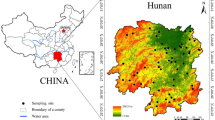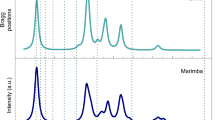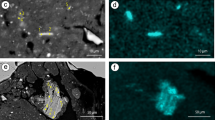Abstract
THE general opinion was that the quaternary, that is, glacial and postglacial, clays of Sweden consist mainly of physical weathering products from the ice age. During this age, the moving glaciers attacked the top of the rocks (mainly granite, gneiss and similar materials) and ground them into particles of various size: boulders, stones, gravel, sand, silt and clay. As a result of transportation by ice and glacial rivers and subsequent deposition, the different quaternary formations were formed, the clays being deposited in the sea. It was therefore logical to regard the clay fraction as rock ‘flour’, built up of primary minerals, typical for the original rocks but more or less chemically weathered. The micas were assumed to be responsible for the high plasticity of the clays. However, doubts arose later as to the correctness of the opinion that the clays are built essentially from primary minerals.
This is a preview of subscription content, access via your institution
Access options
Subscribe to this journal
Receive 51 print issues and online access
$199.00 per year
only $3.90 per issue
Buy this article
- Purchase on Springer Link
- Instant access to full article PDF
Prices may be subject to local taxes which are calculated during checkout
Similar content being viewed by others
Author information
Authors and Affiliations
Rights and permissions
About this article
Cite this article
WIKLANDER, L. Mineralogical Composition of Quaternary Swedish Clays. Nature 166, 276–277 (1950). https://doi.org/10.1038/166276b0
Issue Date:
DOI: https://doi.org/10.1038/166276b0
Comments
By submitting a comment you agree to abide by our Terms and Community Guidelines. If you find something abusive or that does not comply with our terms or guidelines please flag it as inappropriate.



